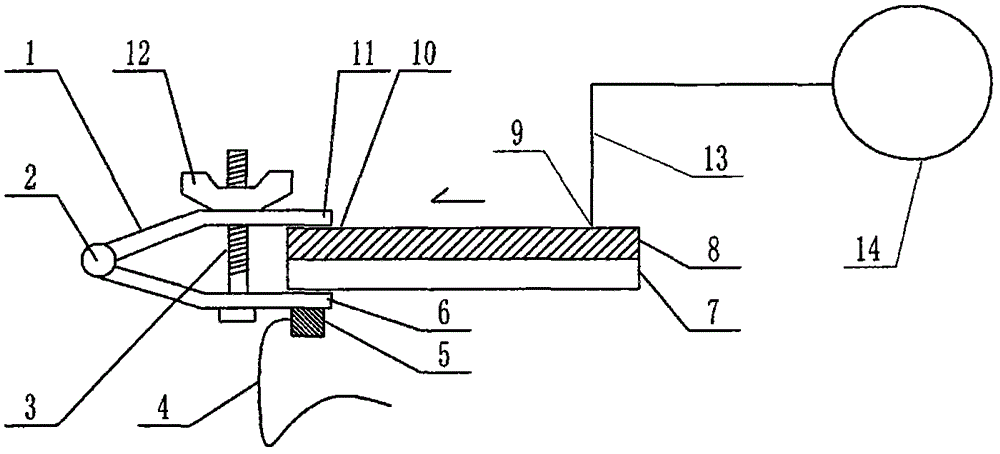Microfluidic chip apparatus adopting high hydrophobic substrate for detecting subtype swine influenza
A microfluidic chip and hydrophobic base technology, applied in the field of analysis and testing, can solve problems such as large flow resistance, distortion, and damage to microfluidic chips, and achieve the effect of increased compatibility
- Summary
- Abstract
- Description
- Claims
- Application Information
AI Technical Summary
Problems solved by technology
Method used
Image
Examples
Embodiment Construction
[0055] exist figure 1 In this example of the present case shown, the structure of the device includes a multi-channel microfluidic chip, and the structure of the microfluidic chip includes a substrate 8 and a cover sheet 7 that are attached to each other and installed together. The substrate 8 and the cover sheet 7 are plates or sheets, and the surface of the substrate 8 facing the cover sheet 7 contains a channel structure formed by a molding process or an etching process, and the substrates that are attached and installed together The sheet 8 and the cover sheet 7 jointly construct a microfluidic chip containing a pipeline structure. The sampling port 9 of the microfluidic chip is connected to the terminal 10, the sampling port 9 is the injection port of the sample solution of the microfluidic chip, and the terminal 10 is the internal testing port of the microfluidic chip during the actual sampling test. The terminal of the flow of the sample solution, the terminal 10 and t...
PUM
| Property | Measurement | Unit |
|---|---|---|
| Diameter | aaaaa | aaaaa |
| Length | aaaaa | aaaaa |
| Thickness | aaaaa | aaaaa |
Abstract
Description
Claims
Application Information
 Login to View More
Login to View More - R&D
- Intellectual Property
- Life Sciences
- Materials
- Tech Scout
- Unparalleled Data Quality
- Higher Quality Content
- 60% Fewer Hallucinations
Browse by: Latest US Patents, China's latest patents, Technical Efficacy Thesaurus, Application Domain, Technology Topic, Popular Technical Reports.
© 2025 PatSnap. All rights reserved.Legal|Privacy policy|Modern Slavery Act Transparency Statement|Sitemap|About US| Contact US: help@patsnap.com

